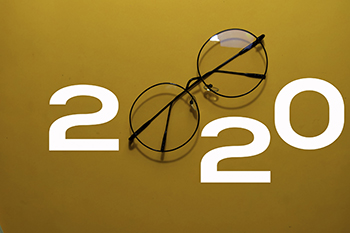I knew I would use this obvious clich’ at least once this year, so it might as well be my January column. So what is 20/20 vision? In its most basic definition, it’s considered ‘normal,’ not perfect vision.
After digging deeper I learned that fractional vision measurements like 20/20 or 20/10 are not actually about how good your vision is, rather they are a measure of visual acuity. The lower the second number, the sharper your visual acuity. The next obvious question is, ‘what’s the difference between vision and visual acuity?’
Visual acuity is strictly about the sharpness of vision, or the ability to recognize small objects at greater distances, but vision itself has more subtle yet equally important facets.
In addition to acuity, vision includes contrast sensitivity, the ability to track moving objects with smooth and accurate eye movements, color vision, depth perception, focusing speed and accuracy, and more. In other words, vision is much more complex than a single fraction.
What does your vision for your company look like? Let’s break it down in optical terms:
Contrast Sensitivity
Let’s start with contrast sensitivity. Basically, it’s the ability to distinguish between finer increments of light versus dark. When’s the last time you took a good hard look at areas of your company that is clearly not meeting your expectations, but maybe you have developed a blind spot over the years? It’s not necessarily about profit, although that is a pretty good indicator.
A tough question to ask when considering the viability of a product or service you are currently selling is, ‘Does this help further the vision of the company, or is it just something we’ve always done and it feels too painful or disruptive to change or stop doing altogether?’
Tracking Moving Objects
What are the moving objects in your business? These are the things that are in a constant state of flux or change. Is your market changing? Are your demographics shifting, maybe from a retiring, older population to millennials buying their first homes?
Are your company demographics changing with younger, tech-savvy people entering the workforce? Are you trying to move from basic service and installation to High-Performance Contracting to become more of a solutions-oriented business versus just swapping and fixing boxes?

Color Vision
A color vision deficiency is determined with a color-blindness test. Color blindness is not necessarily just seeing things in black and white. Rather it can vary greatly based on the ability to distinguish hues of different colors. How do you ‘see’ your company?
Do you feel like your processes are consistent or are there some areas where you don’t have systems that are as clearly defined or consistent with other areas? Do you have some ‘blindness’ to certain people who maybe get away with things that others don’t? Or are you not aware enough of your high-performers, or those with great potential, as you should be?
Maybe it’s time to look at some of the more subtle hues in our organizations to make sure people are treated fairly and also better recognized for their accomplishments.
Click below to go to the next page













Recent Comments